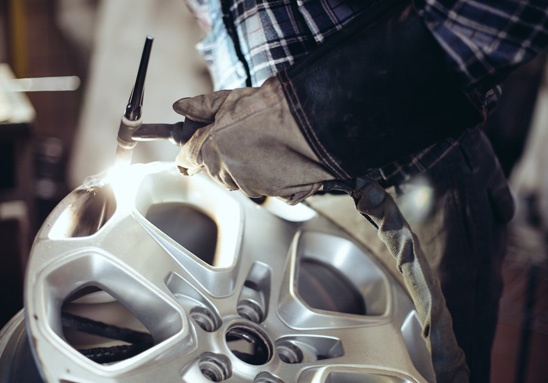flat metal gasket
Understanding Flat Metal Gaskets A Comprehensive Overview
Flat metal gaskets are critical components in various industrial applications, designed to provide a reliable seal between two mating surfaces. They play an essential role in preventing fluid or gas leakage, ensuring the integrity and efficiency of machinery and equipment. This article delves into the characteristics, applications, manufacturing processes, and advantages of flat metal gaskets, aiming to provide a clear understanding of their significance in modern industry.
What are Flat Metal Gaskets?
Flat metal gaskets are thin, flat seals made from metal materials that are used to fill the space between two or more surfaces. They can be constructed from a range of metals, including stainless steel, carbon steel, and various alloys, known for their strength and durability. Unlike other gaskets made from softer materials, flat metal gaskets maintain their shape and resilience under extreme conditions, making them suitable for high-pressure and high-temperature applications.
Characteristics of Flat Metal Gaskets
One of the most notable characteristics of flat metal gaskets is their ability to withstand high pressures and temperatures. This resilience is particularly important in industries such as oil and gas, petrochemicals, and power generation, where equipment operates under demanding conditions. Additionally, flat metal gaskets exhibit excellent resistance to corrosion and chemical attack, enhancing their longevity and reliability.
The design of flat metal gaskets can also vary significantly. They can be produced in various shapes and sizes, allowing for flexibility in different applications. Standard shapes include round, rectangular, and custom geometries tailored to specific machinery or pipe fittings. The thickness of the gasket can also be adjusted, depending on the requirements of the sealing application.
Manufacturing Processes
The manufacturing of flat metal gaskets involves several steps to ensure quality and precision. The process typically begins with the selection of appropriate materials, based on the operating conditions and the nature of the fluid or gas being sealed. Common methods for producing flat metal gaskets include
1. Die Cutting This is one of the most common methods, where sheets of metal are cut into specific shapes using a die. This approach allows for high-volume production with consistent quality.
2. Waterjet Cutting This technique utilizes a high-pressure jet of water mixed with abrasive substances to cut through metal with great accuracy. Waterjet cutting is ideal for intricate designs and can work with various material thicknesses.
flat metal gasket

3. Laser Cutting For precise and complex shapes, laser cutting is employed. It provides high accuracy and a clean edge, making it suitable for applications that require strict tolerances.
4. Stamping and Forming This method involves using metal sheets that are stamped or formed into the desired shape, often resulting in a durable and reliable gasket.
Applications of Flat Metal Gaskets
Flat metal gaskets are widely utilized across multiple industries due to their versatility. Some common applications include
- Automotive Used in engines, exhaust systems, and radiators, where they help to seal joints and prevent leaks of fluids such as oil and coolant.
- Aerospace Critical in various components, flat metal gaskets help seal fuel lines, hydraulic systems, and structural components.
- Oil and Gas Essential in pipelines and valves, they ensure the safe transport of hydrocarbons under high pressures.
- Chemical Processing Used in reactors, heat exchangers, and storage tanks, flat metal gaskets create reliable seals that withstand corrosive materials.
Advantages of Flat Metal Gaskets
The advantages of flat metal gaskets are numerous. They provide superior sealing capabilities in demanding environments, ensuring the safe operation of machinery and equipment. Since they are made from metal, these gaskets can handle extreme temperatures and pressures that would typically deform non-metallic gaskets. Furthermore, their durability reduces the frequency of replacements, leading to lower maintenance costs and less downtime for equipment.
In conclusion, flat metal gaskets are integral components that ensure efficient and safe operations across a multitude of industries. Their ability to withstand harsh conditions, coupled with their versatility in design and application, makes them invaluable in modern engineering. Understanding their characteristics and benefits is essential for engineers and maintenance professionals when selecting the right sealing solutions for their specific needs. Whether in automotive, aerospace, oil and gas, or chemical processing, flat metal gaskets remain essential to maintaining the integrity and efficiency of systems worldwide.
-
The Ultimate Guide to Car Repair Kits: Tools and Essentials Every Driver Should Own
News Aug.01,2025
-
The Complete Guide to Oil Pan Gaskets: Sealing Engine Leaks the Right Way
News Aug.01,2025
-
Preventing Oil Leaks: A Complete Guide to Oil Pan Gaskets and Drain Seals
News Aug.01,2025
-
Everything You Need to Know About Oil Pan Gaskets and Drain Plug Seals
News Aug.01,2025
-
Essential for Car Owners: How to Use a Car Repair Kit to Deal with Minor Breakdown
News Aug.01,2025
-
Comprehensive Guide to Engine Oil Sump Gaskets and Related Seals
News Aug.01,2025
-
The Ultimate Guide to Boat Propeller Bearings and Trailer Wheel Bearings
News Jul.31,2025
Products categories















